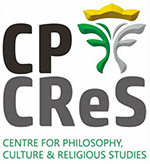Seni dalam Perspektif Keilmuan: Berbagai Cara Kerja dan Pengetahuan Seni
DOI:
https://doi.org/10.26593/mel.v27i1.313.77-88Abstract
The advanced nature of art owes to the fact that it involves the complexity of 'human' in its process, with all the capacities: emotions, feelings, soul, mind, imagination, will, attitudes, perceptions, values and meanings. Science and technology, by contrast, does not deal directly with these human dimensions. While at the beginning of this article 'science' and 'art' are seen as two completely different disciplines, in today development, particularly in the development of ‘post-modern science,’ the boundaries between them appear to be dissolving. The methods of science now even 'fuse' with the ‘methods’ of art. Among the discoveries of science there have been used the 'paradigm of the art' or the 'artistic courses of action'. In contrast, the patterns in art itself now also rely on scientific and technological discoveries, such as imaging technology (imagology) or virtual reality. What is developing in the discourse of searching 'knowledge' in all areas is the so-called 'artistic paradigm'. 'Artistic paradigm' is a model of searching for knowledge (truth, wisdom, beauty), by allowing the mind to move dynamically in the disorder, the black box, and chaos, but then to find a dynamic equilibrium in the so-called the 'edge of chaos'.
Downloads
Published
Issue
Section
License
Copyright (c) 2011 Yasraf Amir Piliang

This work is licensed under a Creative Commons Attribution-NonCommercial 4.0 International License.
MELINTAS applies the Creative Commons Attribution (CC BY NC) license to articles and other works we publish. If you submit your paper for publication by MELINTAS, you agree to have the CC BY NC license applied to your work.


